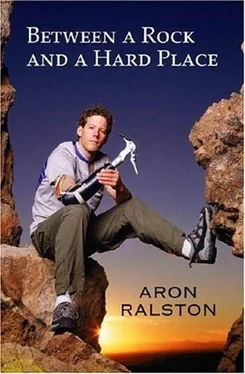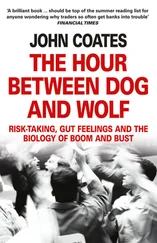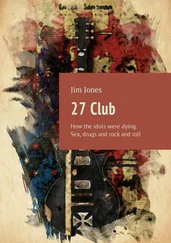It’s rare. But it happens. Has happened.
This chockstone pinning my wrist was stuck for a long time before I came along. And then it not only fell on me, it trapped my arm. I’m baffled. It was like the boulder had been put there, set like a hunter’s trap, waiting for me. This was supposed to be an easy trip, few risks, well within my abilities. I’m not out trying to climb a high peak in the middle of winter, I’m just taking a vacation. Why didn’t the last person who came along dislodge the chockstone? They would’ve had to make the same maneuvers I did to traverse the canyon. What kind of luck do I have that this boulder, wedged here for untold ages, freed itself at the split second that my hands were in the way? Despite obvious evidence to the contrary, it seems astronomically infeasible that this happened.
I mean, what are the odds?
Mountains are the means, the man is the end. The goal is not to reach the tops of mountains, but to improve the man.
– WALTER BONATTI, Italian climber
IN AUGUST 1987, when I was twelve, my family was preparing to move to Colorado from Indianapolis, Indiana, to follow my dad’s career. While visiting with a friend of our family in rural eastern Ohio that July, I found an encyclopedic book about the fifty states and looked up my future home. At the time, I had never been over ten miles west of the Mississippi River in my life. Facing this imminent displacement to the West, I wanted to find out what was in store for me. I admit I was prejudiced-I had preconceived images of horseback riders, skiers, and so much snow that it covered the state year-round.
What I found in the book not only reinforced those notions, it terrified me. There was a photo of Pikes Peak, the view from which inspired the song “America the Beautiful,” according to the caption. To my twelve-year-old eyes, the peak was so rugged that it seemed a caricature of ferocious nature. I didn’t know at the time that there are both a railway and a road to the top of the peak, ending in a parking area beside a restaurant and gift shop. At that point in my life, the great outdoors was a concept limited to the woods behind my house, the dirt-bike course over on the lot near my friend Chris Landis’s house, and Eagle Creek Reservoir on the outskirts of Indianapolis. In my world, the outdoors did not include mountains. And it especially did not include mountains fourteen thousand feet tall. Intimidated, I turned the page.
I found people skiing down improbably steep slopes at life-threatening speeds. Though I’d taken my metal-runner Flyer all over the embankments, ditches, and streets of our Indianapolis subdivision, and even ridden a sizable hill in the neighborhood north of our house, I was always able to drag my feet behind me to brake. How do you stop on skis?
I flipped the page again, and this last picture shook me to my core. It was a photo of people cross-country skiing the streets of Denver after a winter storm. There were no vehicles on the roads, just lanes of people on their skis. I slammed the book shut in horror. My imagination went to work completing the scenario. People don’t drive anywhere in Colorado, they just cross-country ski. To school, to work, to the grocery store, wherever they went, people travel only on skis, as in some Nordic wonderland. Even in the middle of the summer. To a kid who’d been born in Ohio and spent his formative years as a Hoosier, raised on the holy trinity of basketball, basketball, and Indy car racing, skiing, even on flat ground, was as foreign a concept as riding a camel.
As I developed more of an idea of this place where my family was headed, I came to believe in Colorado as an entire state of skiers, the landscape striated with ski tracks, social groupings segregated by skiing ability. How would I ever fit in if I couldn’t ski? I cried to myself in bed every night for a week after I read that book. While sad that we were parting ways, my friends were excited for me to move to Colorado. They told me how much fun it would be to go skiing. They didn’t realize that was exactly what terrified me so much. Having noticed my red eyes and sniffles, my parents grew concerned at dinner one night. “It looks like you’ve been crying. What’s wrong?” my dad inquired.
“I’m scared,” I lied. I wasn’t scared, I was absolutely terrorized by the notion of moving to Colorado.
My dad tried to console me, saying, “I know moving is hard. We’re all leaving our friends behind. You know you’ll make new friends, right?”
“Yeah. That’s not why I’m scared.”
“Why are you scared?”
Once I had explained about the book, my parents smiled, reassured me that it didn’t snow that much that I would have to ski to get to school, and got me in a better mood. We flew out for a visit before we moved, and aside from the nasty sunburn I got at the water park, I found that Colorado wasn’t nearly as inhospitable as it had first seemed. Once we moved for good, I joined the ski club at my middle school, and by the end of my second day on skis that December, I was hurtling down intermediate runs, outracing all my new friends, and even tackling some of the hardest terrain at Winter Park/Mary Jane, the resort that would become my absolute favorite place to ski moguls in the whole world.
My adaptation to my new environment continued the next summer, when I had a seminal outdoor experience on a backpacking trip in Rocky Mountain National Park. The two-week-long trip with other thirteen- and fourteen-year-olds into the park’s backcountry marked the first time I would ever carry a heavy load and spend the night more than a few minutes’ walk from a house or vehicle. A full season of skiing had assuaged my fear of the mountains. Without knowing it, I was poised on the brink of a love affair.
On the first day of our late-June backpacking trip, I felt so enthused by being in such a grand place as the western side of the park that I leaped and bounded down the trail despite my pack load. My frantic energy quickly earned me the nickname Animal, after the drummer of the Muppet band. Our group’s two counselors had their hands full trying to keep me from sprinting off ahead of the group. After lunch they increased my pack burden with the huge bucket of peanut butter that was to feed our group of fifteen for five more lunches, until we were resupplied, but even so I would run up to the next curve along the trail and disappear from sight until I heard one of the leaders shout, “Animal! Wait for us!”
That first evening, as dusk approached, we spread out around our campsite at 9,600 feet elevation in the Big Meadows, each of us with a notepad and the encouragement to write or draw whatever we wanted. I sat in the tall grass in the middle of the meadow, alongside the shallow gravel-bottom stream, and played with the water. After a few minutes on the bank, I watched an adult mule deer amble out from the cover of the trees toward the creek, twitching her ears and shaking her head to shoo away insects. I froze in place, entranced, as the doe paraded out into the meadow, right to left, as I looked to the south. I was at the fringe of our group, since everyone else had stayed closer to the tents. She reached the water, and I leaned back to reach my tablet and cautiously opened the cover, anxious that any rustling might frighten her. For the next five minutes, which seemed like both five hours and five seconds, the doe drank from the creek and I sketched her shape on my notepad, until she turned and walked back into the forest.
When our fifteen minutes of personal reflection time were up, everyone else was quiet and introverted until I bounced into camp with my report of the deer. The other kids were impressed, and I showed off my sketch-it wasn’t brilliant art, by any means, but as a souvenir of my awe, it did the job. Two nights later, up at a boulder field of 11,000 feet, I experienced the fun of scrambling on house-sized rocks. We dunked our bodies in a stream pool so cold the snow-banks extended down into the water. That same night I learned a firsthand lesson about not leaving sweaty boots outside the tent when there are porcupines around (they ate the leather uppers, laces, and tongues, reducing my boots to Vibram-soled flip-flops).
Читать дальше












